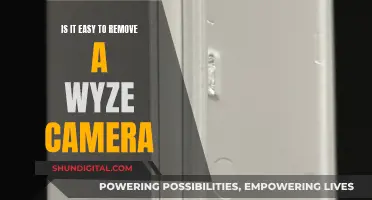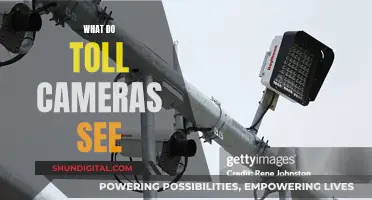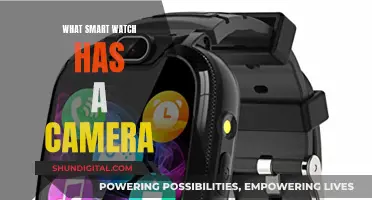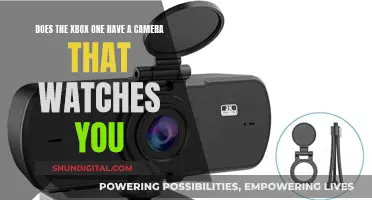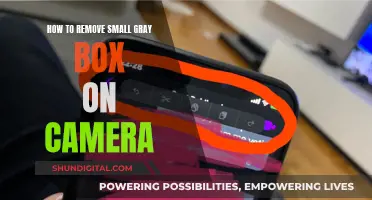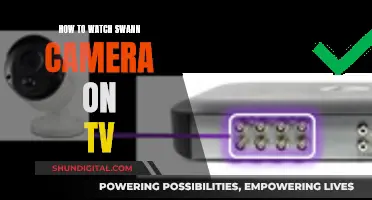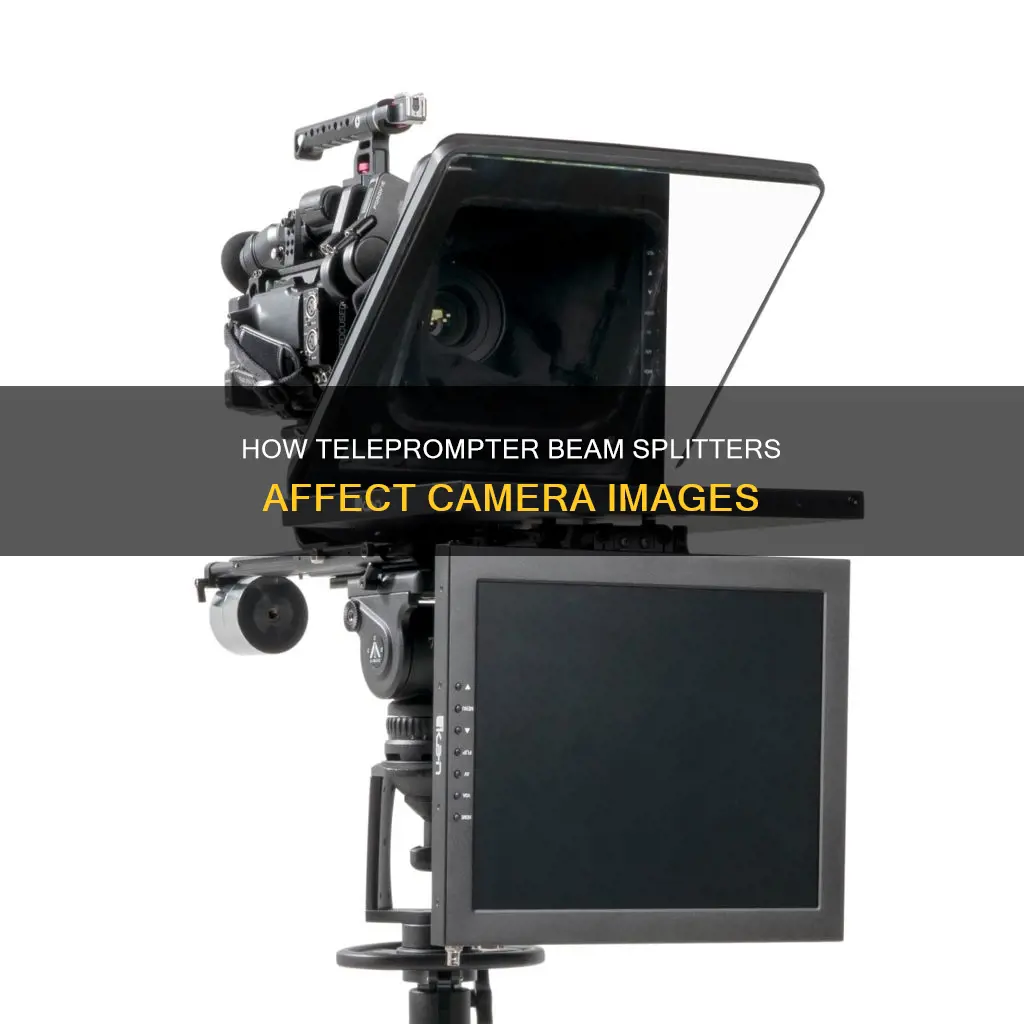
A teleprompter is a valuable tool for filmmakers, videographers, and presenters, allowing them to read a script while appearing to look directly at the viewer. A key component of a teleprompter is a beam splitter, a type of specialised mirror that can reflect and transmit light simultaneously. The question of whether teleprompter beam splitters darken the image seen by the camera is an important one, as it can impact the quality of the recorded video.
| Characteristics | Values |
|---|---|
| Image quality | High-quality, flawless, or immaculate |
| Light transmission | Tint-free |
| Ghosting | Minimized or eliminated |
| Glass thickness | 2mm, 3mm, 4mm, or 6mm |
| Glass coating | Anti-reflective, tint-free mirror, dielectric, metallic |
| Glass transparency | 70%, 30%, 11%, or 45% |
| Glass reflection | 30%, 60%, 35%, 40%, or 55% |
| Glass type | Standard float glass, low iron glass |
| Glass shape | Square, rectangle, trapezoid, or custom |
| Glass maintenance | Clean with standard glass cleaner and paper towels |
What You'll Learn
- Beam splitters are specialised mirrors with a coating that allows them to reflect and transmit light simultaneously
- The glass splits the beam or light source when placed at the correct angle
- Beam splitters are made with varying levels of transparency and reflection depending on their intended use
- The text on the teleprompter will be reversed in the mirrored glass of the beam splitter
- The camera side of the beam splitter has an anti-reflective coating to prevent a double image, known as ghosting

Beam splitters are specialised mirrors with a coating that allows them to reflect and transmit light simultaneously
A beam splitter is a specialised mirror with a coating that allows it to reflect and transmit light simultaneously. This technology is also used in two-way mirrors that show a reflection on one side and allow people to see through the glass on the other side.
Beam splitters are used in teleprompters to allow the presenter to read a script while appearing to look at the viewer. The beam splitter is placed in front of the camera lens at an angle of 45 degrees. The text is reflected off the front of the mirror and toward the presenter, who sees the text superimposed over the camera lens. However, because the mirror is angled toward the presenter and away from the lens, none of the text is reflected toward the camera. The camera only sees the presenter while they read the script.
The beam splitter glass used in teleprompters is often rated at or around 70% reflection and 30% transparency (70R/30T). The strong reflection allows the on-screen talent to read the words clearly, and the relatively low transparency prevents ghost images and muddled text. The glass is also tint-free to allow for flawless picture quality.
To prevent ghosting, or the appearance of double images, the backside of the beam splitter mirror has an anti-reflective coating. This coating also prevents a reduction in light transmission, eliminating the need to adjust exposure settings.
Stop Neighbors Spying: Block Their Camera Views
You may want to see also

The glass splits the beam or light source when placed at the correct angle
A beam splitter is a specialised mirror with a coating that allows it to reflect and transmit light simultaneously. The glass, when placed at the correct angle, splits the beam or light source. This technology is also used in two-way mirrors that show a reflection on one side and allow people to see through the glass from the other side.
The beam splitter glass for traditional teleprompters is often rated at or around 70% reflection and 30% transparency (70R/30T). The strong reflection allows on-screen talent to read the words clearly, and the relatively low transparency prevents ghost images and muddled text. The glass is placed at a 45-degree angle over the prompter, allowing the light source to shine through the glass and reflect the words onto the prompter.
The text on the teleprompter will be reversed in the mirrored glass of the beam splitter. To prevent this, the settings in the prompter can be changed to reverse the text so that it will read properly in the mirror. The angle of the glass is also important to minimise ghosting, which is a double image of the text that is reflected off the rear of the glass. The offset can be minimised by adjusting the angle of the glass, but this angle is only correct for one horizontal zone across the glass.
Beam splitter glass has a reflective coating on the front side of the glass and sometimes an anti-reflective coating on the far side, which makes the ghost image much less bright and therefore less distracting. The anti-reflective coating will prevent any double reflections, allowing the camera to record through the glass with immaculate picture and video quality.
A Simple Guide to Watching Yi Camera Footage in Real-Time
You may want to see also

Beam splitters are made with varying levels of transparency and reflection depending on their intended use
Beam splitters are optical devices that split a beam of light into a transmitted and a reflected beam. They are made with varying levels of transparency and reflection depending on their intended use. For example, privacy glass for homes typically has a coating with 70% reflection and 11% transparency (70R/11T), while beam splitters for traditional teleprompters are often rated at or around 70R/30T.
The level of transparency and reflection in a beam splitter is determined by the thickness of the coating applied to the glass or plastic substrate. For instance, the thickness of the resin layer in a cube beam splitter is adjusted so that half of the light incident through one face of the cube is reflected, and the other half is transmitted. Similarly, the thickness of the deposit in a half-silvered mirror is controlled so that part of the light is transmitted, and the rest is reflected.
Different types of beam splitters exist, such as plate and cube beam splitters, and they are used for a variety of purposes. For example, beam splitters are required for interferometers, autocorrelators, photo cameras, projectors, and laser systems. The wide range of applications implies widely varying requirements, which can be fulfilled with different types of splitters.
Some important properties to consider when selecting a beam splitter include whether it is polarizing or non-polarizing, the wavelength region it operates in, the incidence angles it can handle, and the optical losses it exhibits. Beam splitters with metallic coatings, for instance, typically have higher losses compared to those with dichroic coatings.
In the context of teleprompters, the level of transparency and reflection in a beam splitter is crucial for ensuring that the on-screen talent can easily read the text while maintaining a clear image for the camera. The beam splitter should have sufficient reflection to allow the talent to see the text clearly and enough transparency to prevent ghosting and ensure a high-quality image for the camera.
Smart TV Webcam: What You Need to Know
You may want to see also

The text on the teleprompter will be reversed in the mirrored glass of the beam splitter
A teleprompter is a valuable tool for filmmakers, videographers, and presenters using scripted content. The teleprompter setup usually combines three parts: the monitor for displaying rolling text, the shroud for blocking unwanted light, and a reflecting screen or piece of glass placed in front of the camera lens. The text that the reader will be reading is shown on the monitor in reverse, and this picture reflects onto the teleprompter clear glass in front of the camera lens, which is actually a one-way mirror.
The beam splitter, also known as a teleprompter mirror, is a crucial component of the teleprompter system. It is a specialized mirror with a coating that allows it to reflect and transmit light simultaneously. The glass splits the light source when placed at the correct angle. This technology is also used in two-way mirrors, which show a reflection on one side while allowing people to see through the glass from the other side.
Beam splitters are made with different levels of transparency and reflection, depending on their intended use. For example, privacy glass for homes typically has a coating with 70% reflection and 11% transparency (70R/11T). Beam splitter glass for traditional teleprompters is often rated at or around 70R/30T, with a strong reflection allowing the talent to read the words clearly, and low transparency to prevent ghosting and blurred text.
Optical quality teleprompter mirrors, also known as dielectric beam splitters, offer flawless picture quality for the camera while providing a crisp reflection of the text. These mirrors have a tint-free mirror coating on the reflective side and an anti-reflective coating on the backside to prevent ghosting.
Streaming Roku Camera Footage to Your TV
You may want to see also

The camera side of the beam splitter has an anti-reflective coating to prevent a double image, known as ghosting
A teleprompter is a valuable tool for filmmakers, videographers, and presenters. It allows them to read a script while appearing to look at the viewer. A teleprompter typically consists of a beam-splitter mirror, also known as a beamsplitter, placed at a 45-degree angle in front of the camera lens.
The beam-splitter mirror is a critical component of a teleprompter. It is a specialised mirror with a coating that allows it to reflect and transmit light simultaneously. The glass splits the light source when placed at the correct angle. This technology is also used in two-way mirrors, which show a reflection on one side while allowing people to see through the glass from the other side.
One common issue with teleprompters is "ghosting", which is the appearance of a double image or a secondary reflection of the text that can be distracting and make the script difficult to read. This typically occurs when using ordinary glass or plastic instead of a proper beam-splitter.
To prevent ghosting, the camera side of the beam splitter has an anti-reflective coating. This coating eliminates the double reflection, ensuring that the camera captures a clear and flawless image without any ghosting effects. The anti-reflective coating works in conjunction with the reflective coating on the front side of the glass, which makes the ghost image much less bright and, therefore, less noticeable.
By using a beam-splitter with these specialised coatings, the camera captures a high-quality image without any unwanted reflections or ghosting. This is essential for maintaining the desired image quality in video production and ensuring a seamless presentation experience for the speaker.
Hellcats TV Show: Stream It Ad-Free
You may want to see also
Frequently asked questions
No, teleprompter beam splitters do not darken the image. The tint-free glass allows the camera to record through the mirror with flawless picture quality.
A beam splitter, also known as a half-silvered mirror, is a piece of glass with a specialized mirror coating that reflects and transmits light simultaneously.
The beam splitter is placed at a 45-degree angle in front of the camera lens. The text is reflected off the front of the mirror towards the presenter, who sees the text superimposed over the camera lens. However, since the mirror is angled towards the presenter, none of the text is reflected towards the camera lens.
A beam splitter allows the presenter to look at the camera while simultaneously reading the script. It also reduces the "ghosting" effect, where a secondary image of the text is reflected off the rear of the glass, appearing slightly offset from a brighter image reflected off the front surface of the glass.


